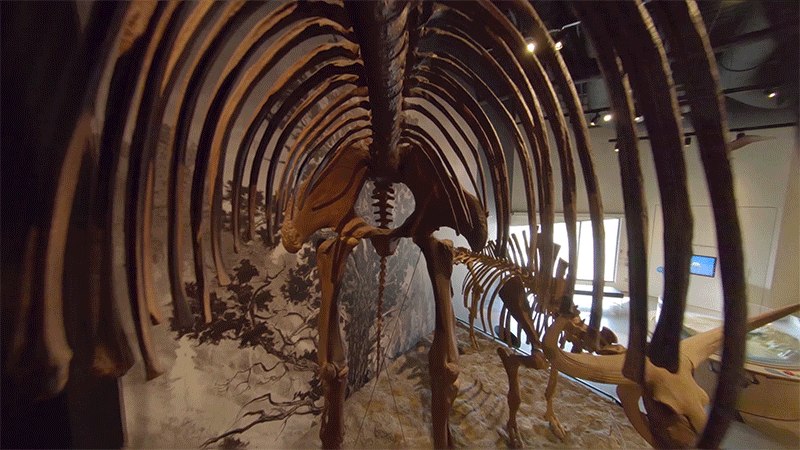It ’s one matter to navigate a radio-controlled aircraft along a picturesque coastline , capturingbreathtaking footageyou could never get on the earth . But it takes an whole dissimilar spirit level of attainment to pilot a dronethrough intricate dinosaur skeletonsinside a museum . So how do you squeeze a flying camera through such narrow obstacles ? In addition to steady hand on the controls , you ask some heavy customized hardware .
There ’s no shortage of diminutive bourdon on the market place at this point , but it ’s hard to find one that ’s manoeuvrable , responsive , and one that include a high - timber camera on board . So Robert McIntosh designed and built his own which uses four tight pack propellers that each scarce quantify a few inches in sizing . In improver to a humbled - quality streaming camera that allow the craft to be piloted from a first - person view using a pair of video goggles , the droning also carries a GoPro 6 for capture 4 K footage of every flight .
share with weight is the biggest challenge for a tiny drone like this . The lighter you may make it , the easier it is to fly . So to incorporate a 4 K camera , the GoPro 6 was stripped of its protective housing , decent down to its canonical electronics and power portion . For comparing ; a stock GoPro 6 weighs in at 115 grams , but the intact micro drone McIntosh built , including the barebones GoPro , matter just a little more at 120.3 grams . The craft also ends up with a much smaller footprint , which is important when you ’re trying to aviate it decently through the dinosaur skull in theNatural History Museum of Utah’scollection .

Gif: (Vimeo)
The computer hardware is only half of the equation when it comes to enamor a video recording as impressive as this . Simple magic like reverse the footage of the flight of stairs helps make it even more compelling as the watcher ca n’t see where the poke is headed , but even the best drone pilots in the world ca n’t keep their guile perfectly stiff . To achieve the still final result seen in this museum fly through , a stabilization software package calledReelSteady GOwas used during post - production .
stabilise footage usually require a piece of software to first analyze and track the movements of a clipping ; detecting heebie-jeebies , bulge , and vibrations which are then canceled - out by applying the same movements in reversion . The results can be honorable , but ReelSteady GO streamline the process by instead rely on the movement data that a GoPro tv camera ’s gyro captures during each transcription . It not only provides more accurate data about how the photographic camera is getting find around , it also pass the time - consume appendage of having to first examine unfirm footage . For comparison , here ’s the raw footage of that museum flight , minus any stabilisation :

It should hopefully go without say , but the next time you visit a dinosaur museum you probably should n’t whip out your pilotless aircraft and buzz the exhibits . McIntosh had permit to vaporize here and based on hisprevious telecasting , he ’s a much better lagger pilot than you ’ll ever be .
Update , June 5 , 4:26 p.m. EST / EDT : At the petition of the museum , the stabilized , final version of the video has been take down .

dinosaursDrones
Daily Newsletter
Get the best tech , scientific discipline , and culture newsworthiness in your inbox daily .
word from the future tense , delivered to your present tense .
You May Also Like













![]()